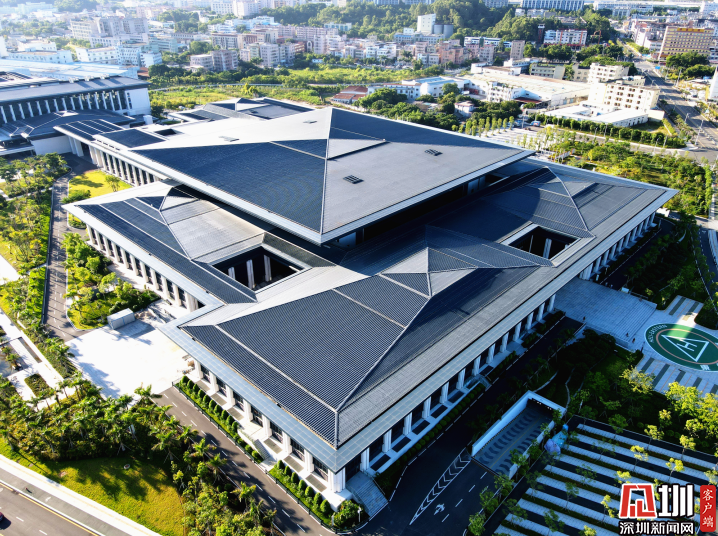Pingshan High-tech Zone aims for global status
Writer: Xia Yuanjie | Editor: Holly Wang | From: Shenzhen Daily | Updated: 2021-03-04

The comprehensive service center of Pingshan High-tech Zone. sznews.com
Shenzhen will provide all the necessary assistance to help Pingshan High-tech Zone to attain w orld-class status, city officials said at a press conference at the Civic Center in Futian CBD yesterday.
While clarifying the city government’s vision for the high-tech zone in Pingshan District, the officials from relevant government departments also pointed out bottleneck problems that are hindering the high-quality development of Shenzhen High-tech Zone. City officials hope that Pingshan High-tech Zone will play its part to help alleviate these problems that are related to industrial layout, supplementary services and city-industry integration, DT News reported.
Pingshan High-tech Zone, which aims to become globally competitive, will have four industries as its backbone: integrated circuit (IC) manufacturing industry, biomedical industry, intelligent connected vehicle industry and new-energy industry, Tao Yongxin, Pingshan’s Party chief, said yesterday.
Pingshan High-tech Zone, officially unveiled in 2019, is located in eastern Shenzhen and covers an area of 51.6 square kilometers, six times the size of its Nanshan District counterpart.
In the integrated circuit manufacturing field, Pingshan attracted Semiconductor Manufacturing International Corp. (SMIC), China’s largest semiconductor foundry company, to construct the first 8-inch integrated circuit (IC) production line in South China in 2014, and the first 12-inch line in 2016. SMIC will continue to expand IC production and investment in Pingshan High-tech Zone with upcoming preferential policies and governmental financial support.
BYD, China’s new-energy vehicle manufacturing giant with its headquarters in Pingshan, is about to launch an IC and power semiconductor project in the high-tech zone.
“To achieve the goal of making semiconductor chips by China itself, the city government will strongly support Pingshan High-tech Zone as a core industrial zone of IC in Shenzhen,” said Chen Huaping, deputy director of the Shenzhen Municipal Industry and Information Bureau.
Pingshan Hi-tech Zone also plays a significant role in the development of the city’s biomedical industry. It has introduced the Shenzhen Academy of Medical Sciences, in which a hospital and a biomedical industrial park with international standards is under first-phase construction.
Pingshan will be “a core engine of the biomedical industry in the Guangdong-Hong Kong-Macao Greater Bay Area,” according to Zeng Jianpeng, deputy head of the Shenzhen Municipal Development and Reform Commission.
In a bid to boost the intelligent connected vehicle industry, the high-tech zone has set up the city’s only smart networked transportation test demonstration platform, where driverless bus and unmanned delivery will be developed and promoted.
Pingshan High-tech Zone is attempting to attract enterprises, institutions and talents from all over the world with its rich land resources, low cost of production and living, comprehensive supporting facilities and livable ecological environment, according to Tao.
At present, Pingshan High-tech Zone possesses the most extensive industrial space in the city. Five projected industrial parks, such as the new-generation information technology park and the Shenzhen-Hong Kong biomedical park, will provide industrial areas of 4 million square meters in 2022.
Tao pledged that projects meeting requirements can enjoy a fixed rental for five years, and high-quality ones will be exempt from 100 percent of their rent.
Qiu Xuan, Party chief of the Shenzhen Municipal Science, Technology and Innovation Commission, also presented the achievements of Shenzhen High-tech Zone at the press conference.
The zone was established in December 1996 with the approval of the State Council. The number of its industrial parks has increased from one to five over the past decades. “These five parks covering 8 percent of the city’s land produced approximately 25.5 percent of the city’s GDP,” said Qiu.